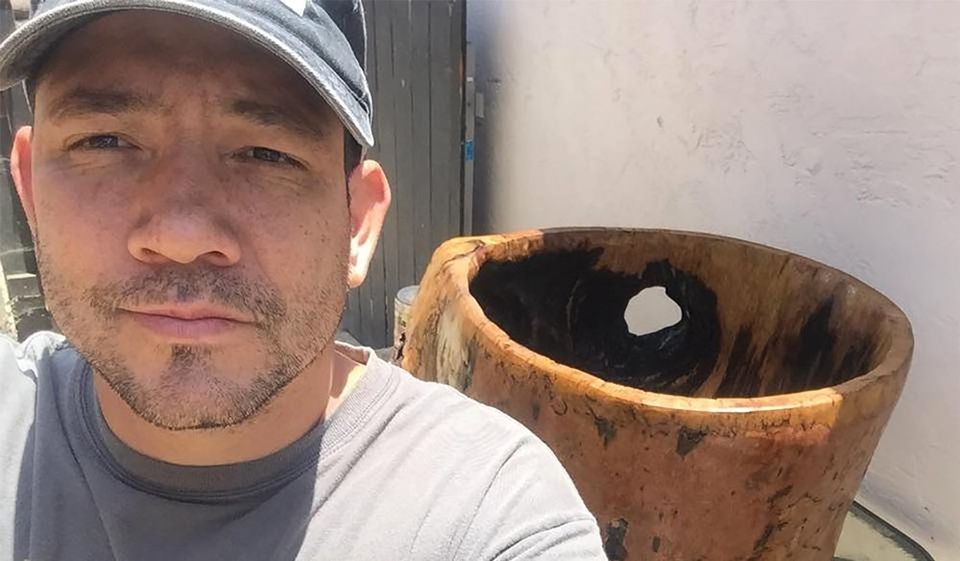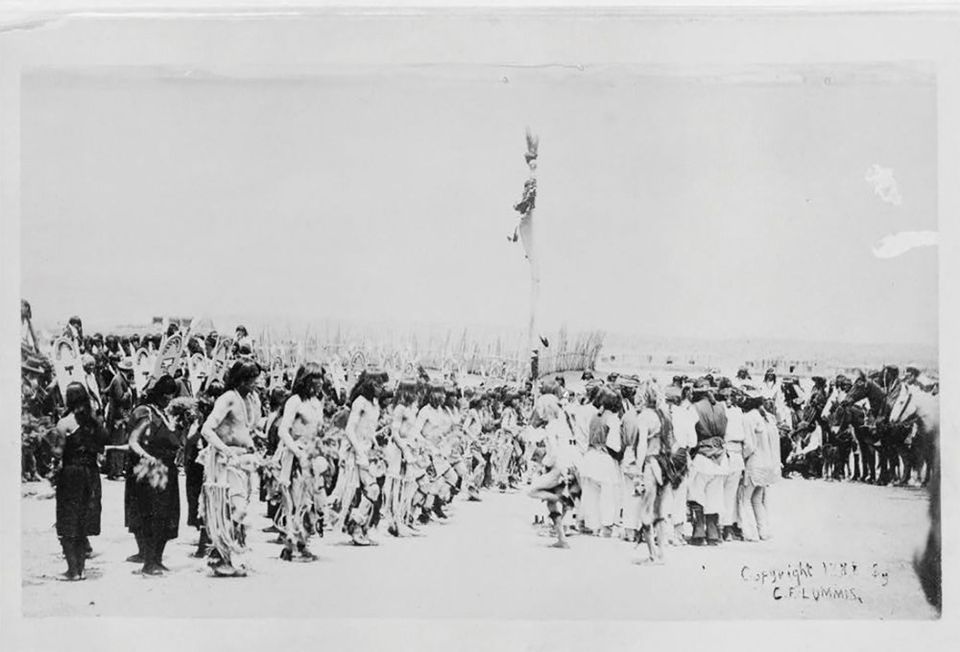Carrying on a Family Tradition

Felipe Gallegos grew up on the Cochiti Pueblo about 35 miles southwest of Santa Fe, New Mexico. He is continuing his family’s tradition through the art of making drums. His Grandfather was taught by the medicine man and, at one time, his father was one of the largest Cochiti drum producers in New Mexico. Felipe was taught to build drums by his Grandfather’s son, Lupe Gallegos.
Drums are critical to the ceremonies held by Native Americans -- an expression of their heritage and beliefs. Today, these ceremonies are an important way for them to continue the many traditional facets of their roots in a world that is modernizing all around them. Drums play a significant role in the Native American communities. Some say they are considered the heartbeats of the animals that went into making the drums and/or of Mother Nature herself.
In a ceremony, the beat of the drum is as significant as the drum itself. Drums are considered sacred to many Tribes and there is belief in their healing powers. At most ceremonies, there will be certain rules and expectations of the drum bearer and anyone who comes in contact with the drum.
Drums are made with a variety of animal hides and wood. Felipe uses woods such as oak, eucalyptus, mahogany, aspen, yellow pine and spruce. As a special project, he once created a drum from a Sequoia Redwood. The animal hides he gets from animals such as elk, deer, buffalo and cow that he will sometimes tan himself. He can achieve a different drum pitch using various skins. Every drum Felipe builds has the same quality of a ceremonial drum. And, although most ceremonial drums are round, he uses all shapes of logs because he never wants to waste any.
Felipe built his first drum when he was between eight and ten years old. He continued to build them until he was 21 when he joined the Navy. After 22 years of service, he went back to his love of building drums and is hoping to make it his full-time occupation. He lives in San Diego to be with his two kids, Carlos and Liliana but he travels back to the Pueblo to get the wood and other supplies used in his drum creations. He would much rather build drums up on the Pueblo than in the city and hopes one day that will be possible and he can move back home.
You can see some of Felipe’s work on his Facebook page by typing in: Felipe Cochiti Gallegos Drums and Art Work (https://www.facebook.com/felipe.gallegos42/) or check them out in person at Mountain Legacy in Lakeside, Arizona.
Sidebar:
The Cochiti are a Keresan-speaking Tribe and their Pueblo is located on the west bank of the Rio Grande River, about 35 miles southwest of Santa Fe, New Mexico. It is the northernmost Keresan Pueblo in New Mexico.
Before the earliest Spanish explorations, their ancestors divided into two groups: one branch going southward, where they built the Pueblo of Katishtya (later called San Felipe), while the other took refuge on the Potrero Viejo, a mesa in north-central New Mexico, where they established a temporary Pueblo known as Hanut Cochiti, about 12 miles northwest of the present-day Cochiti Pueblo. Later, this group moved again -- to about six miles southeast of the present Cochiti Pueblo where they were found by Spanish explorer Juan de Oñate in 1598.
Today, the Pueblo de Cochiti contains some 53,779 acres of Reservation land and sustains about 1,200 Pueblo members. The tribe has jurisdiction over the Kasha-Katuwe Tent Rocks National Monument. The people of Cochiti continue to retain their native language of Keres. They maintain their cultural practices and have instituted programs dedicated to teaching and educating the younger generations in Pueblo traditions and cultural practices emphasizing the native language. The Cochiti are well known for their craftsmanship in making jewelry, pottery and drums.
Photo (below):
Dance at Cochiti Pueblo
Photograph shows "San Buenaventura's Day Corn Dance, performed by the two moieties, first the Turquoise, then the Pumpkin, in front of the church and campo santo. The men wear either red or dull blue body paint and have armbands of green and white; the women wear black mantas and bright green tablitas. From the pattern of the tablitas, the dancers appear to be of the Turquoise moiety. Two of the three Koshare clowns who were present can be seen just in front of the chorus; they are covered with bluish-white clay with black markings and have their hair drawn out in top knots." Handbook of North American Indians, v. 9, p. 373.
Lummis, Charles Fletcher, 1859-1928, photographer - c1888.
Library of Congress












